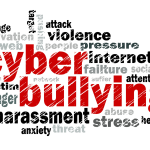Increased Criminal Penalties Have Failed to Deter Online Abuse

Thousands of young Australians are exposed to strangers on social media every day.
And also every day, a significant number of them deal with some kind of unwanted or unpleasant interactions, or even conduct that can amount to criminal offences such as stalking or intimidation or other forms of serious online abuse.
The Online Safety Act
In 2022, a piece of Federal Legislation known as the Online Safety Act came into effect, giving the Australian eSafety Commissioner sweeping powers to gather information about those who post abusive, abhorrent or threatening content – including the identities behind pseudonyms.
It also enables the Commissioner to compel internet companies to remove offensive or threatening content within 24 hours.
The Act prescribes heavy fines and injunctions for those who don’t comply. And, the Commission has the power to require all online service providers to regularly report on how they are meeting expectations under the eSafety Act.
How effective are the eSafety Laws?
But nearly two years on, while the eSafety Commissioner’s own statistics tell a pretty decent success story, it’s difficult to know how effective the laws are in actually stemming the tide of online abuse.
In its first 12 months after the commencement of the Online Safety Act, the eSafety Commission reported that investigators probed more than 1,680 cyberbullying complaints and, in addition, made more than 500 informal requests for online platforms to remove content.
However, at the time, the eSafety Commissioner, Julie Inman Grant said the “tone of this youth-driven cyberbullying content is escalating to concerning levels.”
Vile behaviour is more common than you might think
Here’s an example: a 14 year old girl is sitting alone in her bedroom on a Saturday morning.
She’s added a guy to her ‘friends list’ who appears to be friends of friends. He starts a private message chat. When she doesn’t respond, he writes: “You deserve to be raped.”
When she replies with ‘what’? He says: “I said what I said.”
She asks around her friend group. No one knows him. Similarly, they all added him because he was friends with someone else … She blocks him. And reports to the platform – that report goes into the “ethos”. Blocking is immediate, and it is part of the chat feature, but she receives no response or acknowledgement of her complaint.
Although the e-Safety Commision website immediately acknowledges complaints, it also advises that it cannot act until 48 hours after reporting to the platform. Under Australia’s laws, platforms have 24 hours to remove harmful content, or penalise a user for breaching platform standards and, in some cases, laws.
Psychological and emotional impact
But it’s frightening when something like this happens to a family – people are able to hide behind fake personas online, so in the back of everyone’s mind are thoughts like – “is it possible we may actually know this person?” “What precautions should we put in place in case this is not a random cyberspace event, but something which has sinister connotations in real life too?”
For the complainant, the after effects of something so fleeting can be very serious. The eSafety website provides links and phone numbers to psychological support services, and according to the stats, in the year 2022-23 more than 4,565 people clicked through from the eSafety website to the Kids Helpline website.
The sense of violation, invasion – because these threats are not outside, they’re in the home – is very real.
And while schools do a certain amount of cyber safety education, parents must also take responsibility to monitor social activity, particularly who their kids are interacting with online. However, for teens, the peer group is very important. Typically there is a high level of trust if someone is connected online to someone they know. Few questions are asked.
Here’s where the danger lies.
And it begs the question that while tough eSafety laws appear to be working, are they actually making any headway in stemming the tide of unacceptable behaviour?
Too much focus on Big Tech?
Certainly, the big companies and social media platforms are feeling the full force of the eSafety Commission’s authority. In October the Australian eSafety Commission fined Elon Musk’s X, (formerly known as Twitter), $610,500 for failing to cooperate with a probe into anti child abuse material practices. It can pursue the matter in court if X refuses to pay the fine.
But what about at a one-on-one level? Particularly amongst young people (aged 14-24) who are the highest users of social media sites.
According to the eSafety Commissioner, almost half (44%) of Australian young people report having experienced a negative online experience in the past 6 months, which includes 15% who received threats or abuse online. In Australia, it’s reported that Snapchat is the primary platform used by cyberbullies.
Cyberbullying laws in New South Wales
For many years, cyberbullying has not been easy to prosecute.
However, in 2018, the New South Wales Government introduced ‘Dolly’s Law’ – an amendment to the Crimes (Domestic and Personal Violence) Act which makes cyberbullying a crime, with penalties ranging from 5 years to 10 years imprisonment, along with fines of up to $5,500.
Significant reform under this act, relates to the new definition of intimidation to include cyberbullying, providing the example of bullying of a person by publication or transmission of offensive material over social media or via email.
The same amendments also made changes to the meaning of “stalking” under the law, which now states:
- In this Act, stalking includes the following:
(a) the following of a person about,
(b) the watching or frequenting of the vicinity of, or an approach to, a
person’s place of residence, business or work or any place that a person
frequents for the purposes of any social or leisure activity,
(c) contacting or otherwise approaching a person using the internet or any
other technologically assisted means.
Federal laws for prosecuting cyberbullying
In Australia cyberbullying can also be prosecuted under Section 474.17 of the Criminal Code Act 1995, Using a Carriage Service to Menace, Harass or Cause Offence. This offence carries a maximum penalty of 5 years in prison.
To establish the offence, the prosecution must prove beyond reasonable doubt that:
The accused person used a carriage service, and did so in a way that a reasonable person would regard as menacing, harassing or offensive in all of the circumstances.
A ‘carriage service’ is defined as: ‘a service for carrying communications by means of guided and/or unguided electromagnetic energy’ which includes telephone calls, text messages and internet transmissions, such as emails and the use of social media sites.
The use is ‘menacing’ if it includes an express or implied threat of detrimental or unpleasant conduct which is likely to cause the other person to act unwillingly.
The use is ‘offensive’ if a reasonable person would regard it as being so, considering such matters as:
- the standards of morality, decency and propriety generally accepted by reasonable adults
- the literary, artistic or educational merit of the material, and
- the general character of the material, including whether it is of a medical, legal or scientific character
Making threats online
Section 474.15 outlines that it is a criminal offence to use a carriage service to make a threat to kill another person, with intent that the relevant person fears that the threat will be carried out. It carries a maximum penalty of 10 years imprisonment.
Using a carriage service to make a threat to cause serious harm to a person, with intent that the other person fears the threat will be carried out carries a penalty of 7 years imprisonment.
With our increasing reliance on the internet and mobile phones in everyday life, it’s unlikely that cyberbullying will ever completely disappear. For now, as far as “one-off” or “sporadic” and seemingly unrelated events go, Australians, need to place significant trust in the eSafety Commissioner – that it will investigate and act on complaints – and that it will ensure social media companies will follow their obligations to remove content swiftly and suspend or ban users who do the wrong thing.
For very serious matters – which are persistent and threatening – it’s advisable to gather as much evidence as possible (screenshots) and talk to police about your options with regard to protecting your own safety.







